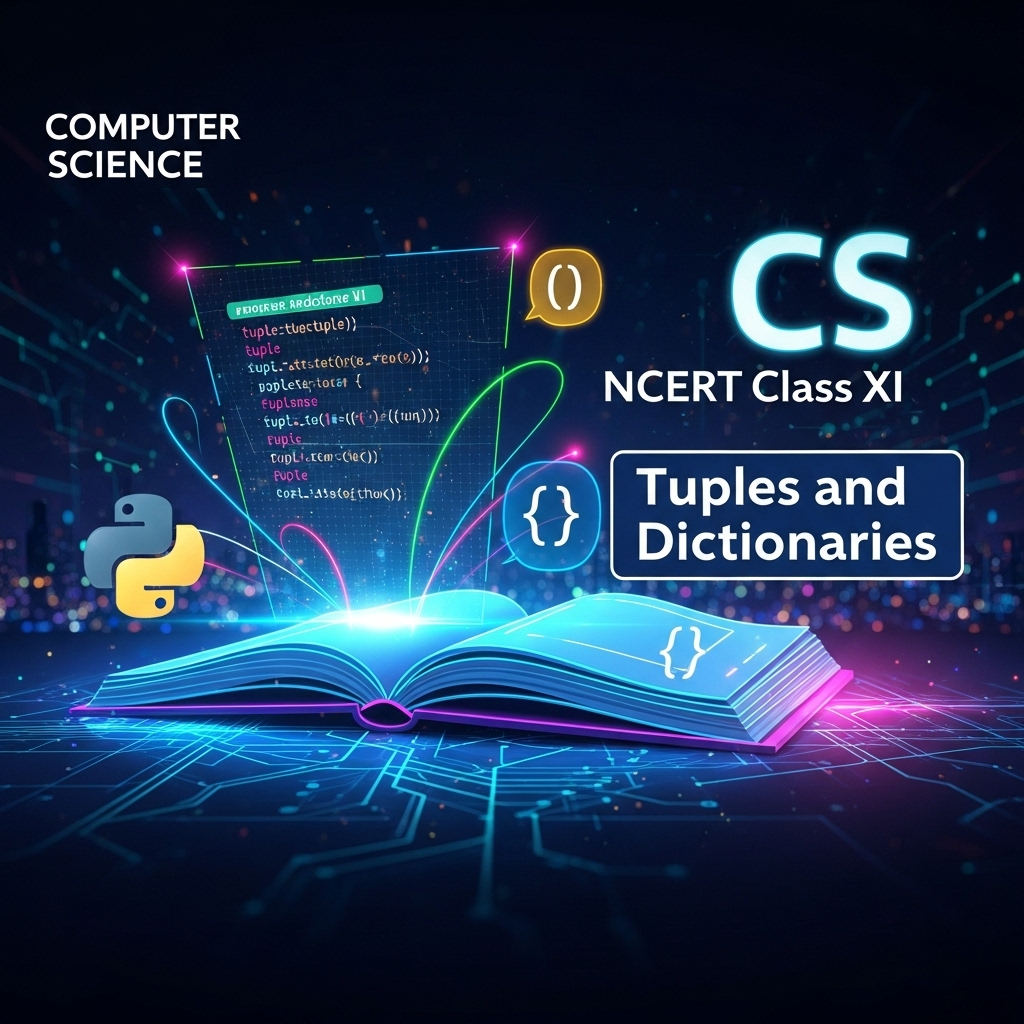Tuples and Dictionaries – NCERT Class 11 Computer Science Chapter 10 – Tuple Operations and Dictionary Handling in Python
Introduces tuples as immutable ordered sequences with elements of different data types and demonstrates tuple operations such as concatenation, repetition, membership testing, and slicing. Explains tuple assignment, nested tuples, and the immutability characteristic. Covers dictionaries as mutable mappings of unique keys to values, dictionary creation, accessing items, operations, traversal, methods, and manipulation. Includes practical programs to illustrate dictionary use for data storage, retrieval, and updates.
Updated: 1 month ago

Tuples and Dictionaries
Chapter 10: Enhanced NCERT Class 11 Guide | Expanded Precise Notes from Full PDF, Detailed Explanations, Diagrams, Examples & Quiz 2025
Enhanced Full Chapter Summary & Precise Notes from NCERT PDF (22 Pages)
Overview & Key Concepts
Exact Definition: "A tuple is an ordered sequence of elements of different data types... enclosed in parenthesis and separated by commas."
- Introduction: Builds on sequences (Ch5); Tuples: Immutable ordered; Dicts: Mutable mapping of keys:values.
- Chapter Structure: Tuples (intro/access/ops/methods/assign/nested/handling); Dicts (intro/creation/access/mutable/ops/traverse/methods/manip).
- 2025 Relevance: Tuples for fixed data (e.g., coords in ML); Dicts for JSON/web data; Immutability for safety in APIs.
10.1 Introduction to Tuples
Precise: Ordered seq of mixed types; () commas; Indexed from 0; Single elem needs comma.
Precise Example 10.1: Tuple Creation (SVG)
10.1.1 Accessing Elements
Precise: Indexing/slicing like lists; [0] first, [-1] last; IndexError out-range.
Precise Table 10.1: Indexing (2,4,6,8,10,12) (SVG)
10.1.2 Immutability
Precise: Cannot change elems; TypeError; But mutable elems (lists) can change.
10.2-10.6 Tuples Ops/Methods/Handling
Precise: + * in/not in slicing; len() tuple() count() index() sorted() min/max/sum; Assign unpack; Nested; Programs 10-1 to 10-4.
10.7-10.12 Dictionaries
Precise: {key:value} mutable; Keys immutable unique; Access [key]; in/not in; Traverse for key/value/items(); Methods: len dict keys values items get update del clear; Programs 10-5 to 10-8.
Enhanced Features (2025)
Full PDF integration, expanded programs (10-1 to 10-8), SVGs (indexing/slicing), detailed tables/examples, NCERT Exercises Q&A updated, 10-Q quiz. Focus: Immutable vs mutable collections.
Exam Tips
Predict outputs (unpacking/indexing); Write UDFs (swap/nested); List methods (Tables 10.1-10.2); Explain immutability/mutability; Practice traversal/dict manip.

Group Discussions
No forum posts available.


